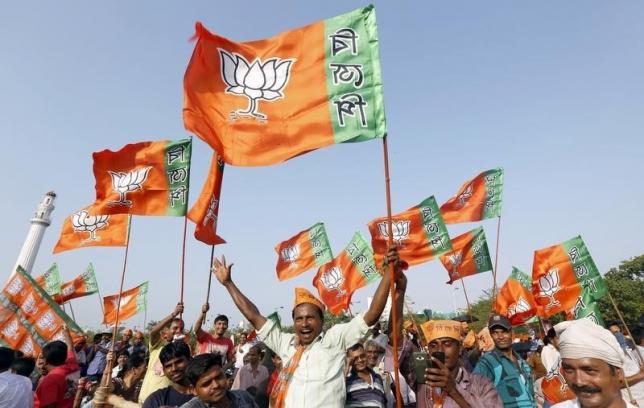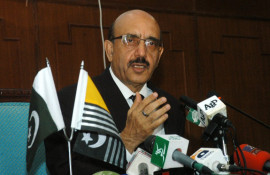
Legend has it that when Ashoka’s conquests led him to Kalinga (modern-day Odisha), the people there put up an unprecedented resistance with a 150,000 strong infantry, 10,000 strong cavalry force, and 700 elephants. To defend a state which was closer to a republic than a monarchy, men and women both fought bravely. The Kalinga War resulted in massive bloodshed. A hundred thousand combatants died and 150,000 were deported. After the annexation, one day when Ashoka went out to take a gander, he was greeted by death and destruction. The sight of charred corpses strewn across the streets reportedly had such a big impact on Ashoka that he ended his empire-building campaign at once and converted to Buddhism. Ashoka and his Maurya Empire, beginning from his grandfather and ending shortly after his own death play, a pivotal role in modern India’s identity. The wheel in the Indian flag is called the Ashoka Chakra and the Indian state emblem is an adaptation of the Lion Capital of Ashoka.
At its most raw, Indian history is no less enticing or thrilling than the Game of Thrones or The Lord of the Rings. Between myths, legends and rambunctious history there developed a host of traditions, some were exceptionally pacifist, others overly virulent. Take Ashoka himself for example. Little attention is paid to his penitence. He is admired as the great empire-builder who in the eighth year of his rule had accomplished in Kalinga that which his father had failed to. This empire, that at its height — albeit briefly — included modern-day Bangladesh, Bhutan, Pakistan, and Afghanistan is also the root cause of the BJP-RSS Akhand Bharat dream. India’s most cherished strategist Chanakya, also known as Kautilya, was an adviser to both, Ashoka’s father and grandfather. Before the Mughals and the British came along, the Maurya Empire was the only proof, some believe an exaggerated if not manufactured one, that a united India was viable. But even if you add the entirety of the tenure under these three rules to India’s life after Independence, it remains a minority chunk of its entire history. India never truly was and never truly will be a single country. And while this mammoth of a state might have worked in pre-modern and medieval times it only contributes to the inefficiency of governance and misery of the common man.
But I want to focus a little more on Ashoka’s penitence. In my childhood, we had devised an interesting game to tackle anyone overly ambitious. It was called “and then what?” Apart from being fun, it was an exercise in character building. In this game, the ambitious ones were first invited to elaborate on the scope of their ambitions. Whenever they would stop, we would chime in “and then what?” and they would take their story to the next logical step. As the story grew and their imagination began to falter they would invariably conclude at the same point — total global domination. And you guessed it right, again came “and then what?” The person in question, if of the brooding kind, would go quiet or explode. ‘What, this is not good enough for you?’ They had to be told, no it wasn’t.
You see the problem with power is that if it is not abused it is insipid, bland, sterile and basically of no use. You wanted sway on other people’s lives. Now if you don’t use it to bend them to your will, what good is it to you? And then there is the hideousness of the shameless puppeteering. Why would you want a sway on other people’s lives? Only insufferable fools think they know what is good for others more than they themselves in this day and age. Don’t get me wrong. It feels good if your advice is heeded. And it is heeded if you build a legacy of offering sincere advice. And even then, you have to be open to the fallibility of your wisdom. But this wisdom is not power. It is the influence. Sages and prophets through ages have touched lives, inspired people to be their best selves. And this is where the India we admire diverges dramatically from Modi’s India.
On October 20, Indian Army Chief General Bipin Rawat claimed in a statement that the Indian army had successfully destroyed terrorist launch pads across the Line of Control in Kashmir. Pakistan’s DG ISPR would then take foreign diplomats to the region to show there were no terror camps and the Indian shelling had only accomplished to destroy the lives and properties of innocent villagers. General Rawat’s statement is significant because it neatly fits a pattern. This claim was reminiscent of the so-called Balakot attack. The common factor between the two incidents, apart from claims of spotting terror camps wherever their bombs landed, was timing. Both incidents preceded elections. In fact, both appeared to be a part of the election campaigns. Balakot before the general Indian elections, and this recent incident just before the Maharashtra and Haryana state elections. This is not business as usual. It is wagging the dog on acid.
But why would the head of a mighty and professional army willingly partake in this charade? General Rawat retires on December 31, shortly before reaching the age of superannuation — 62. Word has it that the newly-minted post of the Chief of Defence Staff (CDS) has been created for him. But here is the problem. If he is elevated to the office, he will retire in a few months if not weeks. To serve in the new, powerful post he needs age relaxation. Indian National Security Adviser Ajit Doval is reportedly tasked to chair the committee that writes the ToRs for the new post and may set 64 years as the upper limit. Hence the general’s devil’s bargain.
But the compromise on the Indian army’s professionalism is not the only cost. When it came to the colonisation of Kashmir, the Indian Constitution, Parliament and Supreme Court have all gone AWOL. How often does it happen in a democracy that a country’s Supreme Court refuses to take up an urgent case affecting lives of over eight million people and their Chief Justice keeps kicking the can down the road in hopes he would retire before the matter absolutely has to be taken up? Not that often. The past judgments of the very same court on the same issue bear testimony to the fact that if an impartial hearing takes place the verdict would go against the Modi government’s will.
The question then is if it is worth it? Is the idea of regional or global domination worth destroying the beautiful idea of India? In my view, it doesn’t. But to the Indian ruling elite which may one day replace the Ashoka Chakra on its flag with a Swastika, not because it is a Hindu symbol but because Hitler used it first, this seems to be an acceptable cost.
Published in The Express Tribune, October 26th, 2019.
Like Opinion & Editorial on Facebook, follow @ETOpEd on Twitter to receive all updates on all our daily pieces.

































































COMMENTS
Comments are moderated and generally will be posted if they are on-topic and not abusive.
For more information, please see our Comments FAQ